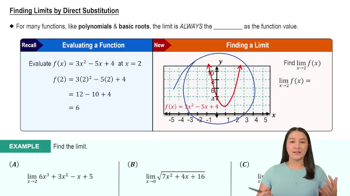Horizontal and Vertical Asymptotes
Assume that constants a and b are positive. Find equations for all horizontal and vertical asymptotes for the graph of y = (√ax² + 4) / (x―b) .
 Verified step by step guidance
Verified step by step guidance Verified video answer for a similar problem:
Verified video answer for a similar problem:



 5:21m
5:21mMaster Finding Limits by Direct Substitution with a bite sized video explanation from Patrick
Start learning